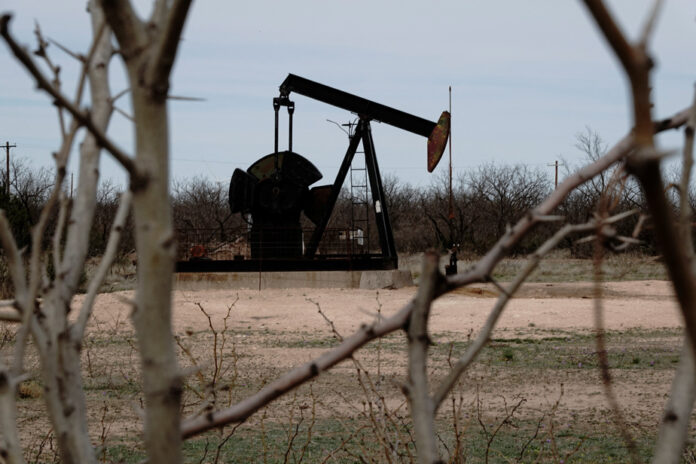(New York) Oil prices recorded another session higher on Wednesday, the third in a row, supported by bouts of dollar weakness as well as data showing a rebound in U.S. demand for refined products.
The price of a barrel of Brent North Sea oil for May delivery rose 1.81% to close at $76.69.
The barrel of American West Texas Intermediate (WTI), also due in May, gained 1.75%, to 70.90 dollars.
Prices benefited from the decline in the greenback, which fell Wednesday to its lowest level in a month and a half after the communication from the American central bank (Fed), interpreted as less offensive than the previous ones.
The vast majority of black gold contracts being denominated in dollars, a fall in its value tends to mechanically raise the price of a barrel.
Overall, the trend has been up since Monday, after a nightmarish week for oil. According to Robert Yawger of Mizuho, speculative traders who had bet lower took their profits, which helped revive the market.
The momentum was kept alive by the release of the U.S. Inventory Report by the U.S. Energy Information Agency (EIA) on Wednesday.
The most scrutinized figure in the report showed an increase in commercial crude reserves (1.1 million barrels), the twelfth in thirteen weeks, while analysts expected a decrease (-1.8 million).
But this data, which resulted mainly from a statistical adjustment more than from a change in market fundamentals, was this time discarded in favor of elements relating to demand.
Gasoline reserves fell sharply by 6.4 million barrels, while analysts were only expecting a decrease of 2.3 million.
The movement is partly due to a rebound in US domestic demand, which rose above the symbolic threshold of 20 million barrels per day, or 4.7% better than the previous week.
Gasoline recovered, but the surge came mainly from distilled products (6.3% over one week), a category in which diesel fuel appears, and propane (45.0%).
“Refiners are going to have to step up,” Robert Yawger anticipated. Because refineries “can’t be running at 88% capacity (as they are right now) and expect to see gas supplies peak before Memorial Day weekend” (holiday) in late May , which traditionally corresponds to the start of the major road trip season in the United States.















